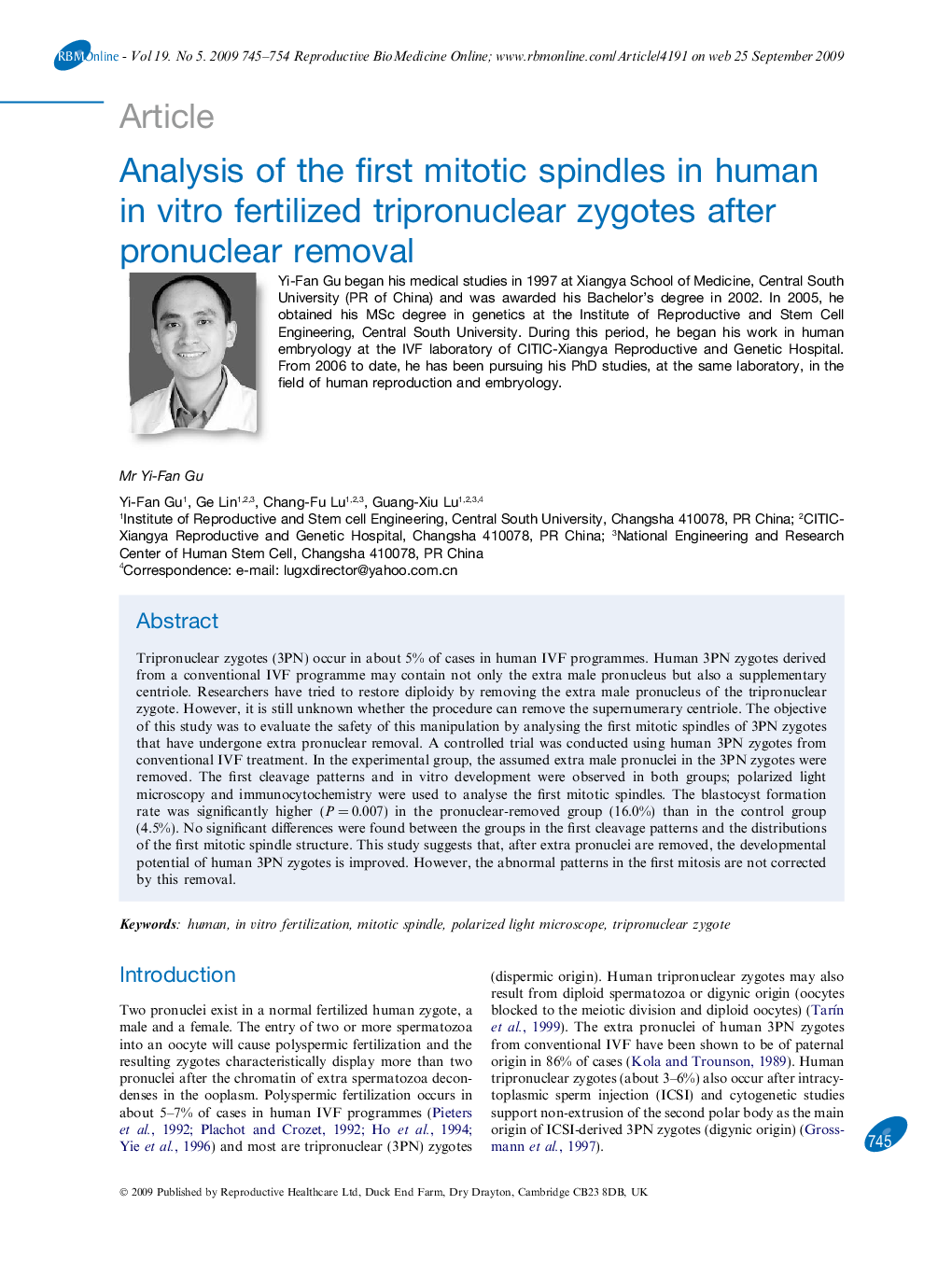| Article ID | Journal | Published Year | Pages | File Type |
|---|---|---|---|---|
| 3971982 | Reproductive BioMedicine Online | 2009 | 10 Pages |
Tripronuclear zygotes (3PN) occur in about 5% of cases in human IVF programmes. Human 3PN zygotes derived from a conventional IVF programme may contain not only the extra male pronucleus but also a supplementary centriole. Researchers have tried to restore diploidy by removing the extra male pronucleus of the tripronuclear zygote. However, it is still unknown whether the procedure can remove the supernumerary centriole. The objective of this study was to evaluate the safety of this manipulation by analysing the first mitotic spindles of 3PN zygotes that have undergone extra pronuclear removal. A controlled trial was conducted using human 3PN zygotes from conventional IVF treatment. In the experimental group, the assumed extra male pronuclei in the 3PN zygotes were removed. The first cleavage patterns and in vitro development were observed in both groups; polarized light microscopy and immunocytochemistry were used to analyse the first mitotic spindles. The blastocyst formation rate was significantly higher (P = 0.007) in the pronuclear-removed group (16.0%) than in the control group (4.5%). No significant differences were found between the groups in the first cleavage patterns and the distributions of the first mitotic spindle structure. This study suggests that, after extra pronuclei are removed, the developmental potential of human 3PN zygotes is improved. However, the abnormal patterns in the first mitosis are not corrected by this removal.
